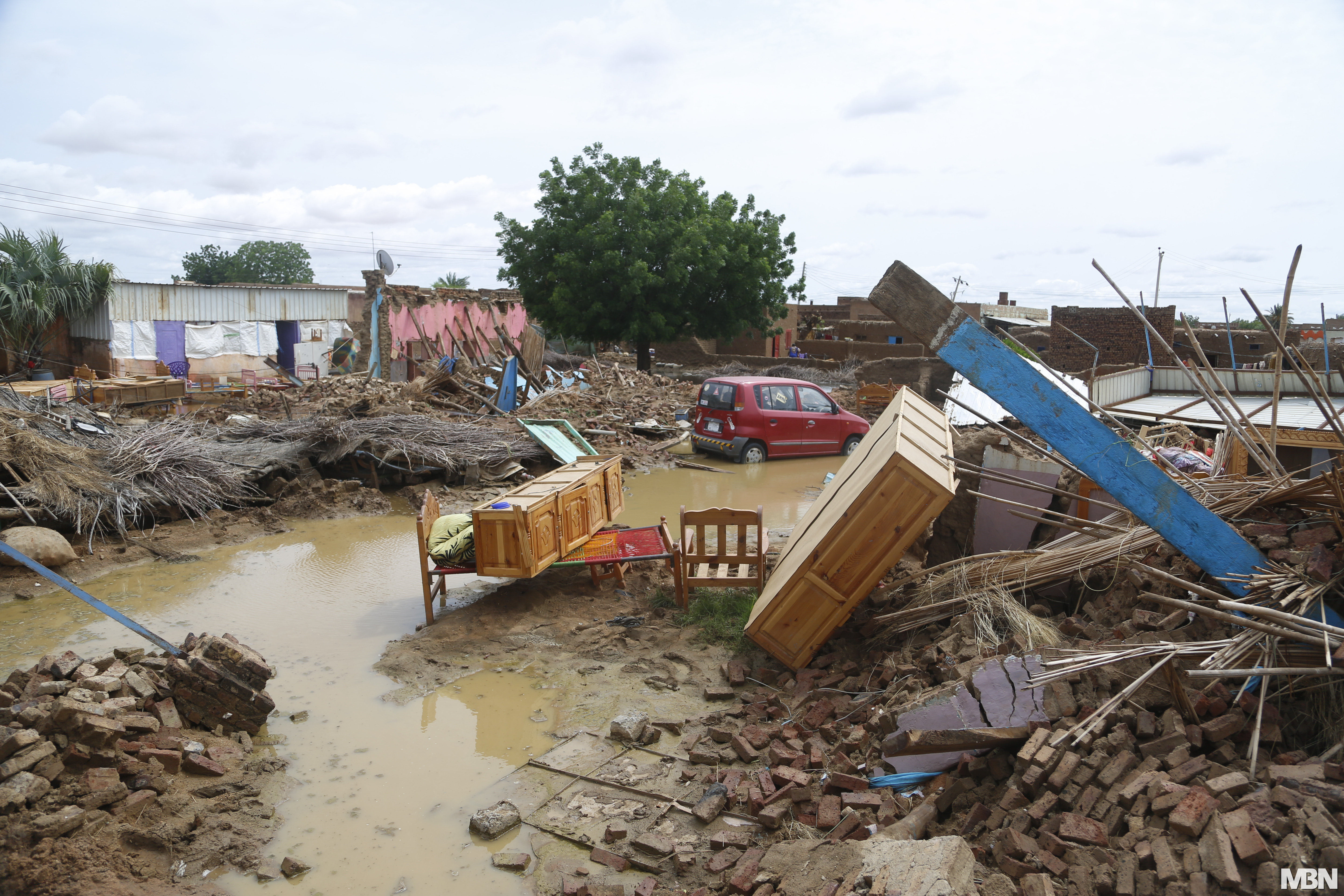
Fire and Water Exacerbate Sudanese Disasters and Tragedies
Khartoum - Moatinoon
Abdullah Abdelghani, 32 years old, woke up in fear as he watched large parts of the outer wall of his house in Khartoum collapse, along with the iron gate. Initially, he thought a war shell had fallen into his house, but he discovered that the collapse was caused by a strong storm followed by rain and snowfall.
Abdelghani said in his interview with Citizens, I woke up from sleep, filled with fear due to the collapse of the outer wall of my house, and I initially assumed that it was caused by a war shell, but the incident was due to the storm and rain.
He added, Fate has determined that we live the double suffering with the fires of war between the army and the Rapid Support Forces since April 15th last year, and the rainfall.
In recent days, the rainy season has started, which usually leads to flash floods and increased risks of waterborne diseases due to the proliferation of mosquitoes, waste accumulation, and the decomposition of bodies left on the streets and sidewalks due to the war.
The heavy autumn rains in Sudan continue from June to October every year.
Peoples Suffering
Amna Al-Jeili, 33 years old, says, The rainfall increases the suffering of people in light of the ongoing battles between the Sudanese army and the Rapid Support Forces, along with the severe shortage of electricity, potable water, and food.
Al-Jeili stated in her interview with Citizens, We fear heavy floods and floods that lead to the collapse of houses.
She added, Last year, we witnessed a real disaster when people had to leave their homes, which were submerged in water, and take refuge in tents on the main asphalt roads.
On August 14, 2022, the United Nations announced that about 136,000 Sudanese people in various regions of the country were affected by heavy rain and floods since June 2022.
Displacement Wave
The war that erupted between the Sudanese army and the Rapid Support Forces since April 15th last year has caused a large wave of displacement, and the expected rainfall, floods, and floods may add a new wave of displacement.
Regarding the citizen Ammar Al-Hadi, he says, The floods displace a large number of citizens, especially those living along the Blue Nile strip when the water levels rise in the Nile after rain in the Ethiopian highlands.
Al-Hadi said in his interview with Citizens, The autumn season is a real problem that people face every year.
He added, With the ongoing war and the expected floods, we hope that humanitarian organizations will stand by the people to alleviate the disaster.
On May 24th, the UN High Commissioner for Refugees, Filippo Grandi, announced in a tweet, More than 300,000 people have fled from Sudan to neighboring countries.
The United Nations mentioned in a report published on May 17th that about 25 million people, representing more than half of Sudans population, are in need of humanitarian assistance.
Agricultural Crisis
The real danger of the war in the country has extended to include the agricultural season due to fuel shortages and a shortage of labor, leading to a severe food crisis in the war-torn country.
The United Nations confirms that 25 million people, more than half of Sudans population, are now in need of assistance and protection.
The farmer, Abdelbaqi Abdullah, says, The agricultural season has completely failed due to the delay in financing by banks, especially since those banks have been looted and robbed since the outbreak of the war in April last year.
Abdullah stated in his interview with Citizens, Obtaining seeds has also become a major problem, in addition to the lack of fertilizers and fuel.
Sudan has over 175 million acres of arable land (1 acre equals 4,200 square meters) and more than 100 million head of livestock.
Additionally, Sudan has areas of forests and grazing lands, totaling 52 million acres, and more than 400 billion cubic meters of annual rainfall.
The agricultural sector serves as an open field for attracting labor and reducing unemployment rates, while agricultural revenues account for 48% of Sudans GDP.

